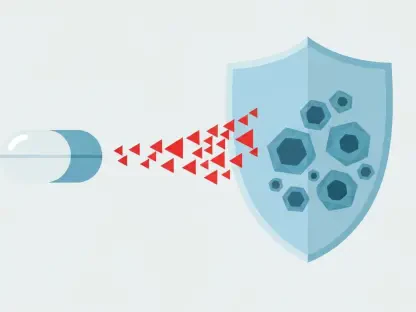In a breakthrough development for cancer treatment and deep tissue imaging, researchers at Tokyo Metropolitan University have created a revolutionary dye. This innovative dye is derived from the bile pigment bilatriene and incorporates a unique ring structure designed to bind rhodium and indium ions. This structural modification allows the dye to effectively absorb light in the second near-infrared (near-IR) region of the electromagnetic spectrum, specifically from 1000 to 1700 nanometers, which is renowned for its superior tissue penetration capabilities.
Enhanced Deep Tissue Penetration
Second Near-IR Region
The significance of the second near-IR region in medical applications cannot be overstated, as light within this range encounters less scattering and absorption by biological tissues. This unique property allows for deeper energy delivery into the body, critical for both imaging and therapeutic purposes. The improvement in tissue penetration makes this new dye an invaluable tool for advanced medical procedures, particularly photoacoustic imaging, which is instrumental in cancer diagnosis and treatment.
Photoacoustic imaging is a technique that relies on contrast agents, which emit heat when exposed to light. These agents then produce ultrasonic waves that can be detected for imaging or can directly cause damage to cancer cells. This method requires efficient light absorption to function effectively, and traditionally, contrast agents in the first near-IR region (700-1000 nanometers) face challenges due to higher light scattering and less efficient energy delivery. The groundbreaking new dye developed by Professor Masatoshi Ichida’s team addresses these shortcomings by exhibiting its strongest absorption at 1600 nanometers, a prime spot in the second near-IR range.
Photostability and Practical Application
One of the major challenges faced by current contrast agents is their tendency to degrade under light exposure, reducing their effectiveness over time. The photostability of this novel dye ensures that it remains stable and functional even after prolonged light exposure. This stability is crucial for its practical application in medical imaging and therapy. By leveraging N-confusion chemistry to modify bilatriene, the team was able to integrate metal ions via nitrogen atoms on the dye’s ring structure. This fundamental change led to a unique electron distribution in the dye’s structure, confirmed through extensive measurements and modeling.
Studies on the molecule’s magnetic field response and density functional theory (DFT) calculations revealed that the electron distribution in the dye enhances its robust absorption properties, outstripping those of previously available compounds. These advanced absorption properties and high photostability make this dye an exceptional candidate for more precise and effective deep tissue imaging and therapeutic heating.
A New Era in Cancer Treatment and Beyond
Precision and Effectiveness
This innovative dye brings about the possibility of significantly improving the precision and effectiveness of deep tissue imaging and therapeutic approaches. It promises to offer a more reliable and stable solution in contrast to existing methods, which often suffer from degradation issues or limited penetration capabilities. The enhanced light absorption in the second near-IR region means deeper tissues can be imaged and treated without the need for invasive procedures. This increased depth and clarity in imaging are particularly crucial in cancer treatment, as they allow practitioners to identify and target tumors more accurately, reducing damage to surrounding healthy tissue.
Future Applications and Research
While the primary focus of this development has been on deep tissue imaging and cancer therapy, the potential applications of this dye extend beyond medical uses. Researchers believe that the unique absorption properties and stability could pave the way for new approaches in chemical catalysis and various other scientific fields. The study, which received support from multiple grants and foundations including JSPS, JST PRESTO, and the Izumi Science and Technology Foundation, underscores the importance of interdisciplinary collaboration in pushing the boundaries of what’s possible.
By providing a more effective tool for both imaging and therapy, this dye could change the way we approach complex medical conditions and lead to new, less invasive treatment options. The success of this project also highlights the potential for further innovations, encouraging additional research into how similar techniques can be applied to other medical and scientific challenges.
Conclusion
Researchers at Tokyo Metropolitan University have made a groundbreaking advancement in cancer treatment and deep tissue imaging with the development of a new dye. This revolutionary dye is derived from bilatriene, a bile pigment, and features a unique ring structure that enables it to bind rhodium and indium ions. The introduction of this structural modification allows the dye to effectively absorb light in the second near-infrared (near-IR) region of the electromagnetic spectrum, ranging from 1000 to 1700 nanometers. This specific range is famously known for its exceptional tissue penetration capabilities, making it highly promising for medical applications. The ability of this dye to penetrate deep tissues could pave the way for more precise and less invasive imaging techniques, as well as enhance the effectiveness of cancer treatments. Such innovations not only represent a significant scientific achievement but also have the potential to greatly improve patient outcomes and quality of life.









